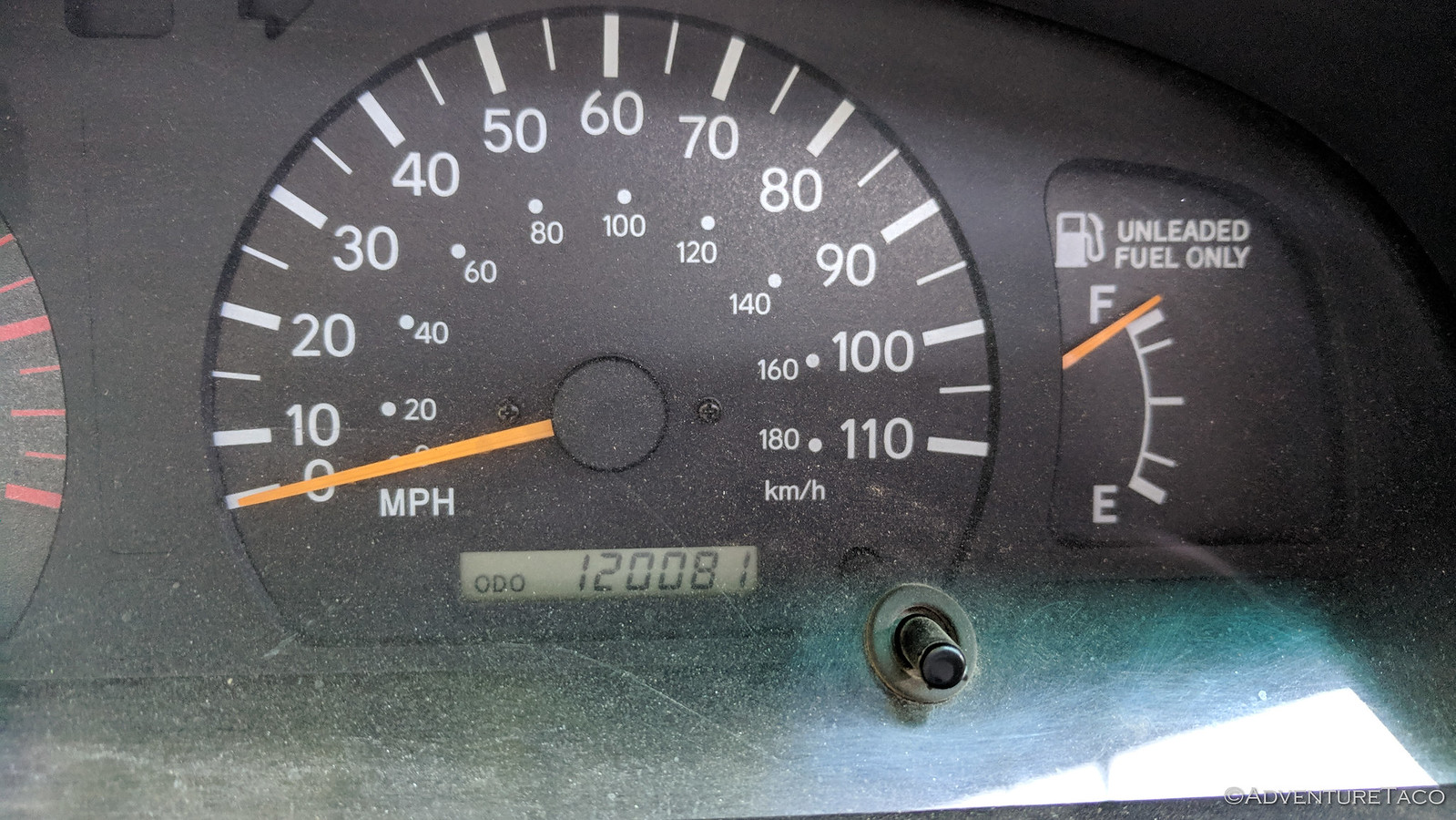TL;DR - After installing my second LutzAuto Speedometer Correction Device, I've started having trouble - the speedometer jumps randomly from 0 - 130mph - with it again. As such, I'm removing it and I'll just do math to correct my odometer readings for MPG averages.

This device has such promise.
For a summary of the issues I was having, check out this earlier post: LutzAuto Speedo Correction Device Issues.
In general, here's my impression of this device and LutzAuto (the company, which I think is one guy like me).
Pros
Bryan - the owner - is a really good guy with great support. He was happy to work with me - both via email and phone - in order to debug what was going on with the first unit and send me a second unit in an attempt to fix the issues I was having.
Conceptually, the device is really great. I'd say that it's theoretically best way to correct the odometer (and/or speedometer) in a Toyota Tacoma / 4Runner / 3-wire Toyota speed sensor vehicle. It's the best because it's easy to install and easy to adjust. Other "not as good" options in my opinion are:
-
- Replacing the speedo gear - this is more work, and only allows for a few preset changes, but is a less expensive option.
- Using a Dakota Digital correction device. This is conceptually like the LutzAuto device but is harder to install and harder to configure. And - at least as of my research - more expensive.
Cons
The device itself has some design clunkiness:
-
- The connectors that fit inline between the speed sensor on the transfer case and the wiring harness to the ECU are not a perfect match for the OEM Toyota connectors. This is what caused the intermittent connection issues, and the jumpy speedometer for me. I don't know that there's much that can be done about this, but figuring out a way to make the connection more secure would essentially fix the problems with flaky connectivity.

This device has such promise.
- The connectors that fit inline between the speed sensor on the transfer case and the wiring harness to the ECU are not a perfect match for the OEM Toyota connectors. This is what caused the intermittent connection issues, and the jumpy speedometer for me. I don't know that there's much that can be done about this, but figuring out a way to make the connection more secure would essentially fix the problems with flaky connectivity.
- The gland that allows the wires to pass from the inside to the outside of the device is at an awkward 90° angle. This makes it hard to route the wires efficiently and seems prone to failure over time due to the continuous stress on the wires.
- The small rectangular clamshell container is secured closed with two small screws on opposite corners, which means that there is uneven clamping pressure around the edge of the clamshell. The combat water intrusion, the installation instructions say to use a bead of silicone around the perimeter to seal it up once calibration has been completed. This construction is likely due to ease of manufacturing (3D printing?) but could be nicer by snapping together and using a rubber o-ring to prevent water intrusion. An o-ring would also allow for easy re-adjustment in the future should tire size, gearing, etc. change.
So, with all that in mind, I still think that a LutzAuto device is the best calibration device out there. While I won't be running it for the time being, I'm not throwing it away, and I may eventually reinstall it if I change tire size and my odometer (always correct the odometer, not the speedometer) is way off.
In this Series
Filed Under







You may already be aware, but it appears that LutzAuto has reengineered the correction device to address at least some of the design issues you mentioned. The case lid now attaches with four screws located at the corners and incorporates a gasket. The 90 deg bend in the wires has also been relieved by relocating the exit point from the case. Anyway, I have my eye on the product as I look to finally step up from the stock tire size on my '98 4wd. I appreciate your posts on the topic.
Interesting. I hadn't been paying any attention to what LutzAuto was doing as far as new versions go, and both of those updates seem to be good ones.
Still, the biggest problem I had was that the connector wasn't a tight fit, which is what caused the sporadic electrical signal, and thus a haywire speedometer (and odometer). The issue there is that getting the "perfect" connector is apparently much harder. I'm not sure if it's just not available, or if the "perfect" one is just a lot more expensive or what. Regardless, that's what I think needs to be addressed before I'd try it again. Or at least, before I'd buy another one to try again. They are simple enough to hook up that I'd be happy to try one if they sent one my direction, lol!
For now, my speedo is pretty close with the 33-tooth speedo gear (and 4.88s and 33" tires), and I just do my corrections for gas mileage in my spreadsheet.
Hmmmm. My searching hasn't come up with any female Toyota connectors that would work, only the one we currently have. Makes me wonder if the female end on a spare speed sensor itself could be unbolted and incorporated into the device housing somehow. Then a separate plug could come out of the housing and connect to the tcase connector.
Installed my older version of the Lutz device today. We'll see how it fairs.